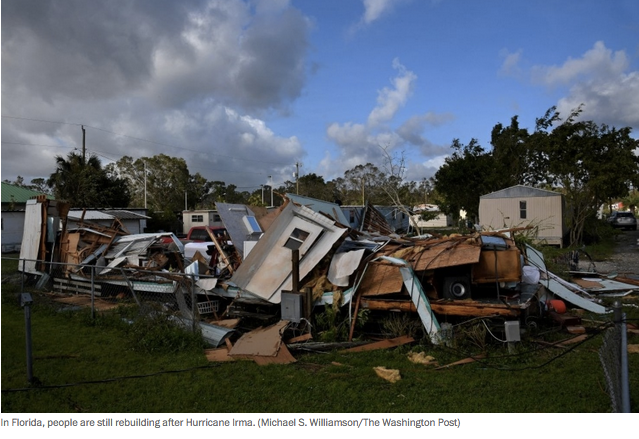Economists fear the otherwise tight U.S. labor market could hold back reconstruction, compared to previous disasters.
In 2005, Hurricane Katrina wrought about $108 billion in damages. Demand in New Orleans soared for carpenters, electricians and plumbers. Immigrants flocked to the city for the blue-collar work.
At the time, the country’s unemployment rate was higher — 4.7 percent when Katrina struck, compared to today’s 4.4 percent. More people were looking for jobs, particularly men.
Male participation in the workforce was 73.3 percent in 2005, while today’s is 69.2 percent. Opioid use, now seen as a factor keeping men out of work, wasn’t yet regarded as a national crisis, and immigration restrictions weren’t as tight. That made it easier for construction firms to find laborers in a hurry when it came time to fix things up.
In contrast, monthly job openings in the United States reached a record high this summer at 6.2 million. Then came the hurricane season’s aftermath, adding on to those vacancies as communities began to put themselves back together.




